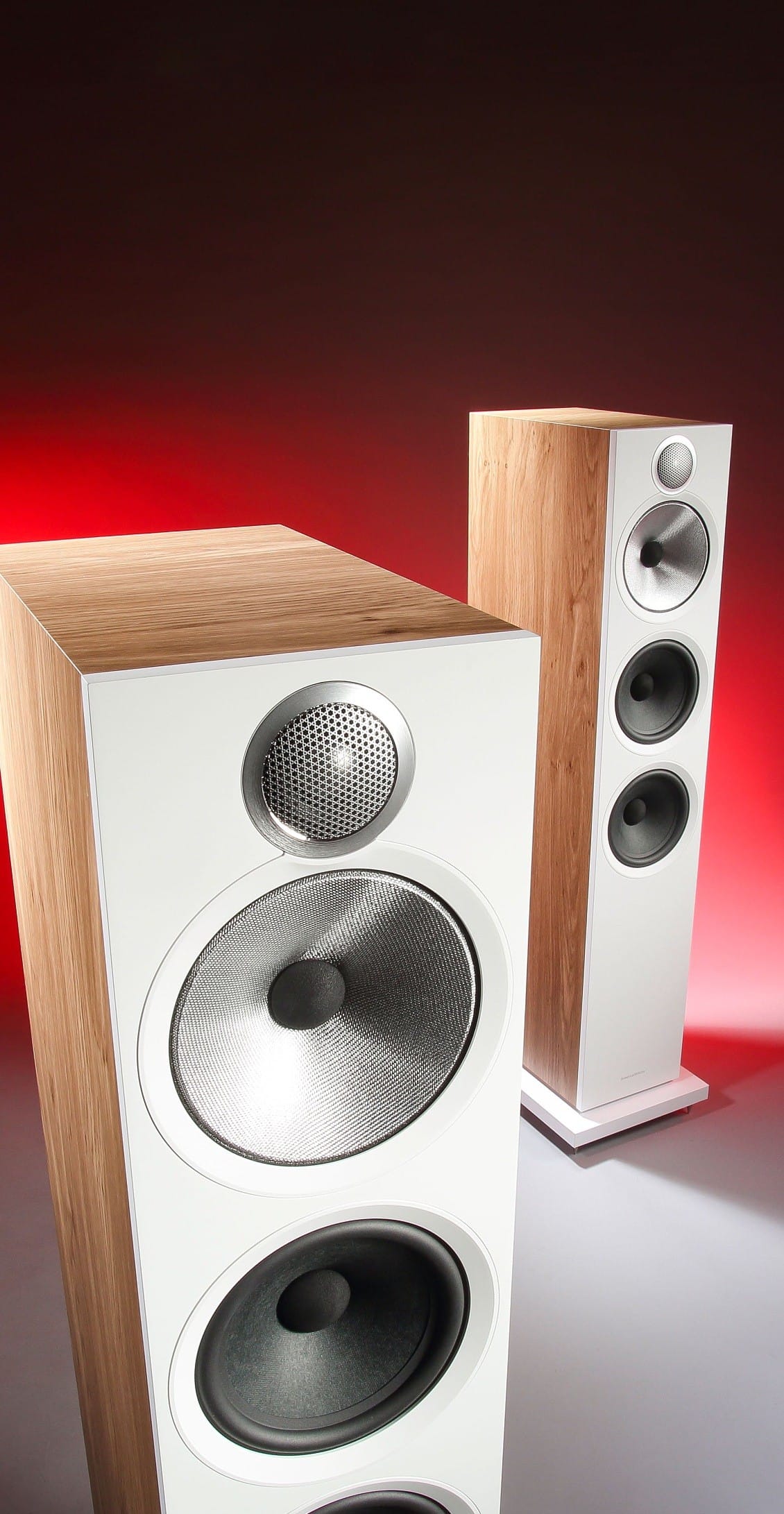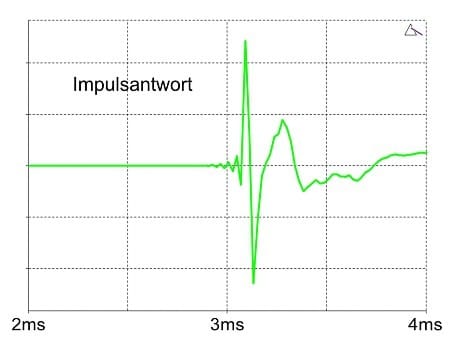Bowers & Wilkins 603 S3 Review
Once again, B&W has perfected technology transfer, successfully packing much of the advanced technology from the premium 700 and 800 series into the more affordable 600 series, specifically the 603 S3 model.

The decades-long success of B&W speakers – or in full, Bowers & Wilkins – has many reasons. One of them is the company’s ability to continually integrate refined technology into subtly evolved designs – not unlike the VW Golf, which has also improved with each generation while maintaining its original technical and visual identity.
Visible and Invisible Changes
The most noticeable visual change is the closer proximity of the tweeter and midrange driver. This aims to bring the sound source even closer to an ideal point, creating the impression that the entire frequency range emitted by both drivers is coming from a single source.
Upon closer inspection, you’ll notice that the previous aluminum dual-dome tweeter has been replaced by a titanium model. The membrane is now mounted on a plate designed for better sound dispersion, matching the dimensions of the 700 S3 models. Other enhancements include a new protective grille first used in the 800 Signature series, which is more acoustically transparent than the previous model. The longer tube system behind the tweeter, adapted for the lower resonance frequency of the new titanium dome, further reduces cabinet resonance, resulting in a freer, more open sound. These improvements are supported by a stiffer internal cabinet structure.
TEST DEVICES
CD Player: Musical Fidelity M3 SCD
Streamer/DAC: Eversolo DMP-A8
Amplifier: Symphonic Line RG 14 Edition
Speakers: Sonoro Grand Orchestra
Cables: Audioquest; Silent Wire
Midrange via Continuum Membrane
When first introduced in the 800 series, replacing the long-used Kevlar midrange drivers, B&W fans were almost in shock. The yellow drivers were considered the gold standard for neutral sound. However, the new silver-gray Continuum membranes were immediately embraced because they surpassed their predecessors in nearly every aspect. This successful technology transfer has now reached the 600 series, with the S3 version featuring the powerful magnet system from the 700 series.
Paper as the Key to the Best Bass
At first glance, paper might seem an outdated material for a modern high-tech product like B&W speakers. However, many developers value it for its excellent mass-to-stiffness ratio, especially when used for low frequencies. It also harmonizes well with other drivers and is more cost-effective than exotic materials. The 603 uses two 16 cm woofers made from this material, in a bass reflex configuration. The reflex port, positioned at the rear, features B&W’s signature golf ball-like dimples to minimize unwanted noise, even at high volumes. If you can’t maintain a 30 cm distance from the rear wall, you can use the included foam plug to close the port.
Task Distribution via Crossover
Many Hi-Fi enthusiasts have discovered that small, smart changes can lead to impressive sound improvements. At B&W, experience has shown that simple crossovers assigning the correct frequency range to each driver can be fine-tuned with bypass capacitors to enhance the naturalness of the sound.
All these changes, along with the well-designed cabinet featuring a color-contrasted front panel and hidden driver mounts, increased our expectations and curiosity about the sound quality.
In summary: We were not disappointed. The latest 603 model delivers a mature performance. The speaker is easy to position: with a distance of around 50 cm, or 30 cm if necessary, from walls, it fits into most living rooms without much fuss. Depending on your listening distance, you’ll need a base width of 2–3 meters from the inner edge to the inner edge and only a slight toe-in. Once positioned and spiked, the speaker delivers a powerful, controlled performance. Its resolution is comparable to magnetostats or high-quality AMT drivers, as evident when listening to Keith Jarrett’s piece “One for Majid” with Gary Peacock and Jack DeJohnette.






Not Sweet, but Honest & Neutral
The sound might not be overly sweet, but it is honest and incredibly detailed. The 603 displays a wide dynamic range, excelling with orchestras, choirs, and opera, whether played softly or at amplifier-challenging volumes. The speaker is quick to respond, showing no weaknesses in imaging or focus. It maintains its liveliness without excessive bass, as demonstrated by Queen’s “Radio Ga Ga.” The 603 handled everything we threw at it, taking on every challenge in its price range without stumbling. The cannon shots in Tchaikovsky’s “1812 Overture” – often the highlight of many recordings – were delivered with power, precision, and realism, without turning quieter passages into boredom or unnecessary spectacle.
The 603’s versatility, ease of placement, and fine craftsmanship make it truly special!
Specs
| Dimensions (WxHxD) in cm | 26 x 103 x 40.5 |
| Weight in kg | 27 |
| Type | Dynamic, 3-way, Bass Reflex |
| Terminal | Bi-Wire |
| Recommended Setup Info | Free-standing, with at least 50 cm of space on all sides |
| Sound Pressure Level (in dB) | 88 |
| Minimal Impedance | 2.8 Ohms |
| Distortion (at 63Hz/3kHz/10kHz) | 0.089 / 0.039 / 0.177 |
| Warranty (in years) | 5 |
| Packaging | Cardboard with Styrofoam inserts |
| Upgradability | No |
Verdict
| Sound Quality | 8.8/10 |
| Frequency Response | 7/10 |
| Impulse Response | 7/10 |
| Minimal Impedance | 5/10 |
| Distortion (at 63Hz/3kHz/10kHz) | 9/10 |
| Compatibility | 8.5/10 |
| Setup | 9.5/10 |
| Manual Quality | 8/10 |
| First Operation | 9.5/10 |
| Sound Adjustment Possible | 10/10 |
| Cabinet Finish | 9/10 |
| Scope of Delivery | 9/10 |
| Haptic / Build Quality | 8/10 |
| Packaging | 7/10 |
When you purchase through links on our site, I may earn an affiliate commission. Here’s how it works.
Bowers & Wilkins 603 S3 Unboxing
Unboxing the NEW 603 S3 floor standing speakers from Bowers & Wilkins. The most notable advancements in these compared to ...
THE NEW Bowers & Wilkins 603 S3 Speakers WORTH THE UPGRADE
In this video I am reviewing the new Bowers & Wilkins 603 S3 HiFi speakers that feature a new titanium tweeter and other ...








